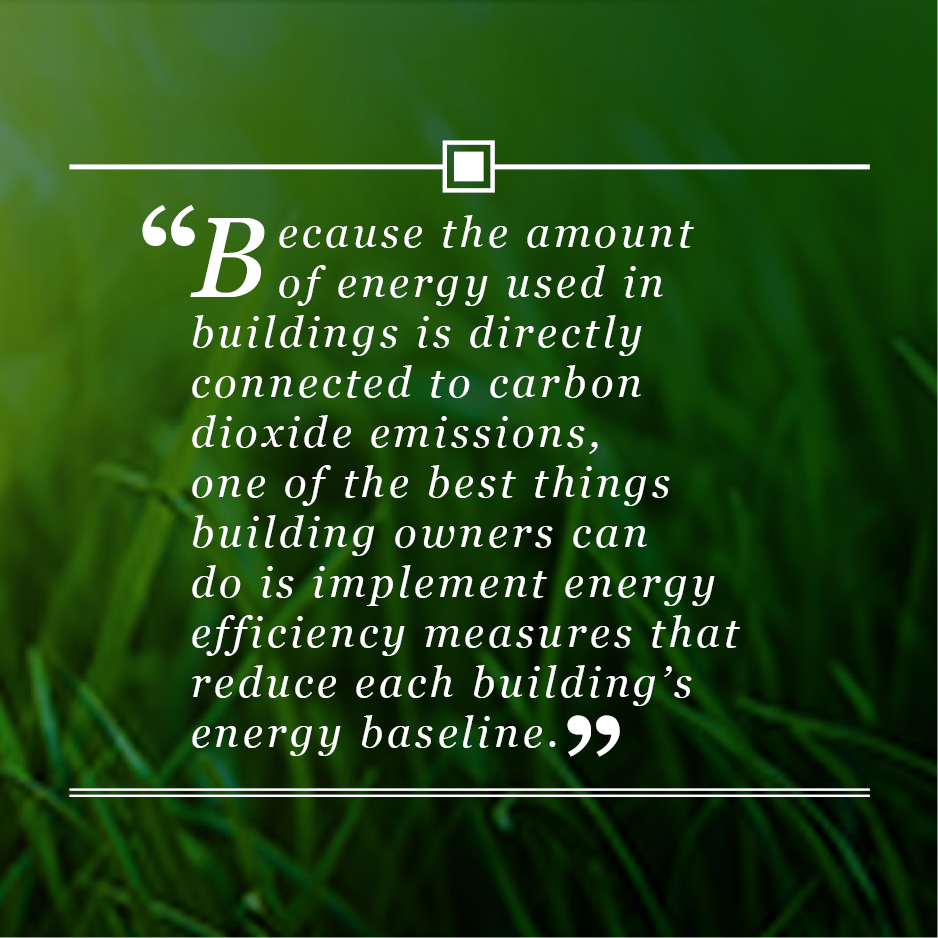 Do you want to decarbonize and strive to become carbon neutral, but you don’t know how to do so? Would you like your buildings and campuses to be powered by renewable energy, such as wind or solar, so you can have a smaller carbon footprint, but you don’t have the capital expenditure funds to invest? Or do you desire to simply use less energy and reduce your energy bills — while still creating fewer greenhouse gasses and (again) reducing your carbon footprint? You are in luck, because investing in energy efficiency can help you begin to achieve all this and save money!
Do you want to decarbonize and strive to become carbon neutral, but you don’t know how to do so? Would you like your buildings and campuses to be powered by renewable energy, such as wind or solar, so you can have a smaller carbon footprint, but you don’t have the capital expenditure funds to invest? Or do you desire to simply use less energy and reduce your energy bills — while still creating fewer greenhouse gasses and (again) reducing your carbon footprint? You are in luck, because investing in energy efficiency can help you begin to achieve all this and save money!
“While renewable electricity investments are indeed a critical pillar of overall decarbonization, energy efficiency is equally critical, yet it is still too-often overlooked,” said Longevity Partners’ Anneli Tostar and Laure Ferrand and Climate Group’s Tessa Lee and LeAnna Roaf in their June 2021 article, “Energy Efficiency: The Unsung Hero of Net Zero Carbon.” They go on to say, “reducing consumption through energy efficiency measures is an essential step to developing an overall decarbonization plan … ”
 According to Lawrence Berkeley National Laboratory’s scientist Jessica Granderson in a Berkley Lab news release, “Buildings account for nearly 40% of the energy used in the United States, with a total bill well over $400 billion per year.”
According to Lawrence Berkeley National Laboratory’s scientist Jessica Granderson in a Berkley Lab news release, “Buildings account for nearly 40% of the energy used in the United States, with a total bill well over $400 billion per year.”
Many cities, counties, states and utilities recognize that increasing your overall energy efficiency reduces the amount of energy used by buildings and establishes a lower baseline of energy need, which can ultimately be satisfied by the increased use of renewable energy. Examples include the New York City Mayor’s Office of Climate and Sustainability, Orlando’s Building Energy and Water Efficiency Strategy and Miami-Dade County’s Building Efficiency 305 program. These have instituted multiple energy efficiency policies and programs, including updating building and energy codes, implementing commissioning and retro-commissioning programs to verify the energy-using systems are installed correctly and operating properly, instituting energy benchmarking and disclosure for commercial real estate and public sector buildings and offering financial incentives and programs. Search the Database of State Incentives for Renewables and Efficiency to find what is available where you are.
The U.S. Energy Information Administration projects that “… global energy consumption and energy-related CO2 emissions will increase from 2020 through 2050 as a result of population and economic growth.” Because the amount of energy used in buildings is directly connected to carbon dioxide emissions, one of the best things building owners can do is implement energy efficiency measures that reduce each building’s energy baseline. As stated in the “Unsung Hero” article mentioned above, “There are many ways that a company can reduce their carbon footprint, but by far the one that makes the most immediate financial sense is to cut back on consumption from the start.”
This mirrors what Hanson has found in the numerous energy audits, retro-commissioning projects and energy masterplans we have developed for our customers. By first focusing on energy efficiency, you reduce the amount of energy you use, save money, create fewer greenhouse gasses, reduce carbon and expand the use of renewable energy! Contact Bill Bradford at bbradford@hanson-inc.com to start your journey to energy efficiency today.